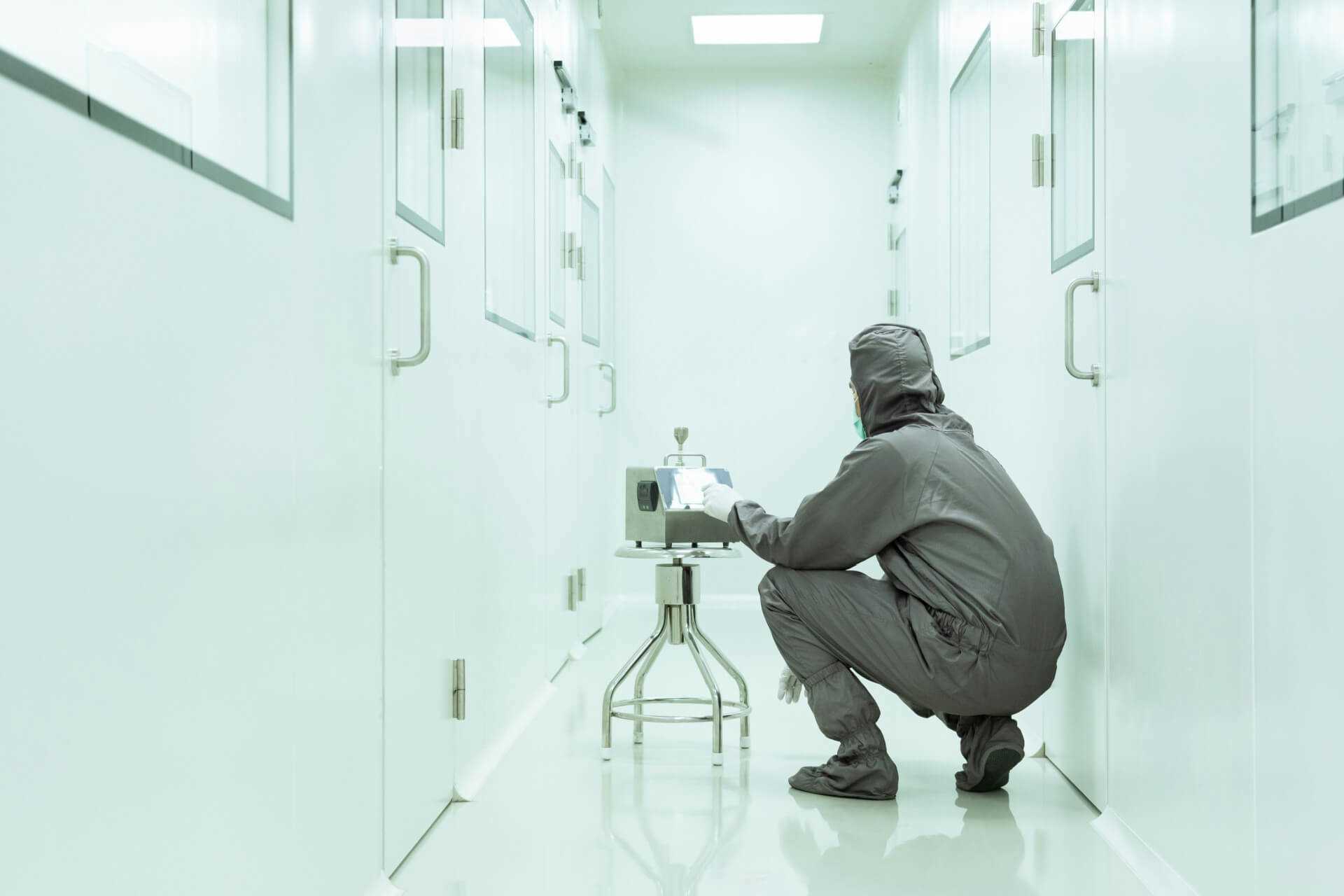
How Facility Design Impacts Contamination Control
Even the best contamination control plan can be undermined by poor facility design. From air handling to material flow, the physical layout of a pharmaceutical or biotech cleanroom plays a critical role in either minimizing or enabling contamination. That’s why understanding the relationship between design and decontamination is essential for maintaining sterility and compliance.
At Vibraclean, we don’t apply a generic cleaning protocol to every site. We evaluate your facility’s design—from layout and room connections to surface finishes and HVAC infrastructure—and adapt our contamination control strategies accordingly. Because how your cleanroom is built affects how it should be cleaned.
Layout and Room Connections
The placement of doors, hallways, and adjacent rooms can significantly influence contamination risk. Cleanrooms that are connected to unclassified or lower-classified areas without proper airlocks or pass-through systems are more susceptible to microbial and particulate intrusion.
Vibraclean identifies areas of concern during the initial assessment and adjusts cleaning priorities based on room-to-room interactions. Entry points, corners, and transition zones receive enhanced attention during disinfection procedures, ensuring that vulnerable pathways don’t become contamination sources.
Workflow and Traffic Patterns
People are one of the biggest contamination vectors in controlled environments. The way personnel, equipment, and materials move through the facility directly affects risk. Poorly planned traffic flow can lead to cross-contamination, especially if dirty and clean activities overlap.
We take these patterns into account when designing a decontamination plan. High-traffic areas are treated with increased frequency, and cleaning schedules are aligned with production cycles to address contamination buildup from foot traffic or material handling.
HVAC and Airflow Design
Airflow direction, pressure differentials, and filtration systems are central to contamination control. However, not all HVAC designs function optimally. Recirculation zones, uneven airflow, or blocked vents can cause particles to settle in unintended areas.
Vibraclean incorporates airflow behavior into our approach. We map out air return points, positive and negative pressure zones, and high-turbulence areas, using this information to guide where, when, and how cleaning should occur. We also include HVAC decontamination as part of our service to support clean air delivery and filtration efficiency.
Surface Materials and Equipment Layout
Some surfaces are easier to clean and disinfect than others. Porous or damaged finishes, joints between wall panels, and complex equipment surfaces can harbor contaminants if not treated correctly. Similarly, tight spaces between machines or under benches may not be accessible using standard tools.
We tailor our cleaning method to match the materials and spatial limitations of your facility. Whether it’s using low-residue disinfectants on stainless steel or choosing application tools that can reach into equipment recesses, our focus is on complete coverage without compromising sensitive surfaces.
Space Constraints and Cleaning Access
Facility design can sometimes work against the cleaning process. Narrow corridors, low ceilings, or crowded equipment arrangements make it difficult to reach certain surfaces consistently. These areas often become overlooked hotspots for microbial or particulate accumulation.
Vibraclean adapts with tools and techniques built for confined or obstructed spaces. We also help clients plan future layouts with contamination control in mind, recommending changes that improve accessibility and reduce hidden risk zones over time.
Design Impacts Validation, Too
Since cleanroom design influences airflow, accessibility, and contamination risk, it also affects how validation should be approached. A well-designed space supports easy environmental sampling, effective disinfection, and repeatable results. Vibraclean works with facility managers and quality teams to ensure that cleaning protocols are realistic and fully supported by the physical environment.
Facility design isn’t just about operations—it’s about protection. Vibraclean understands how to work with what’s there, and how to clean with the design in mind, not against it.
